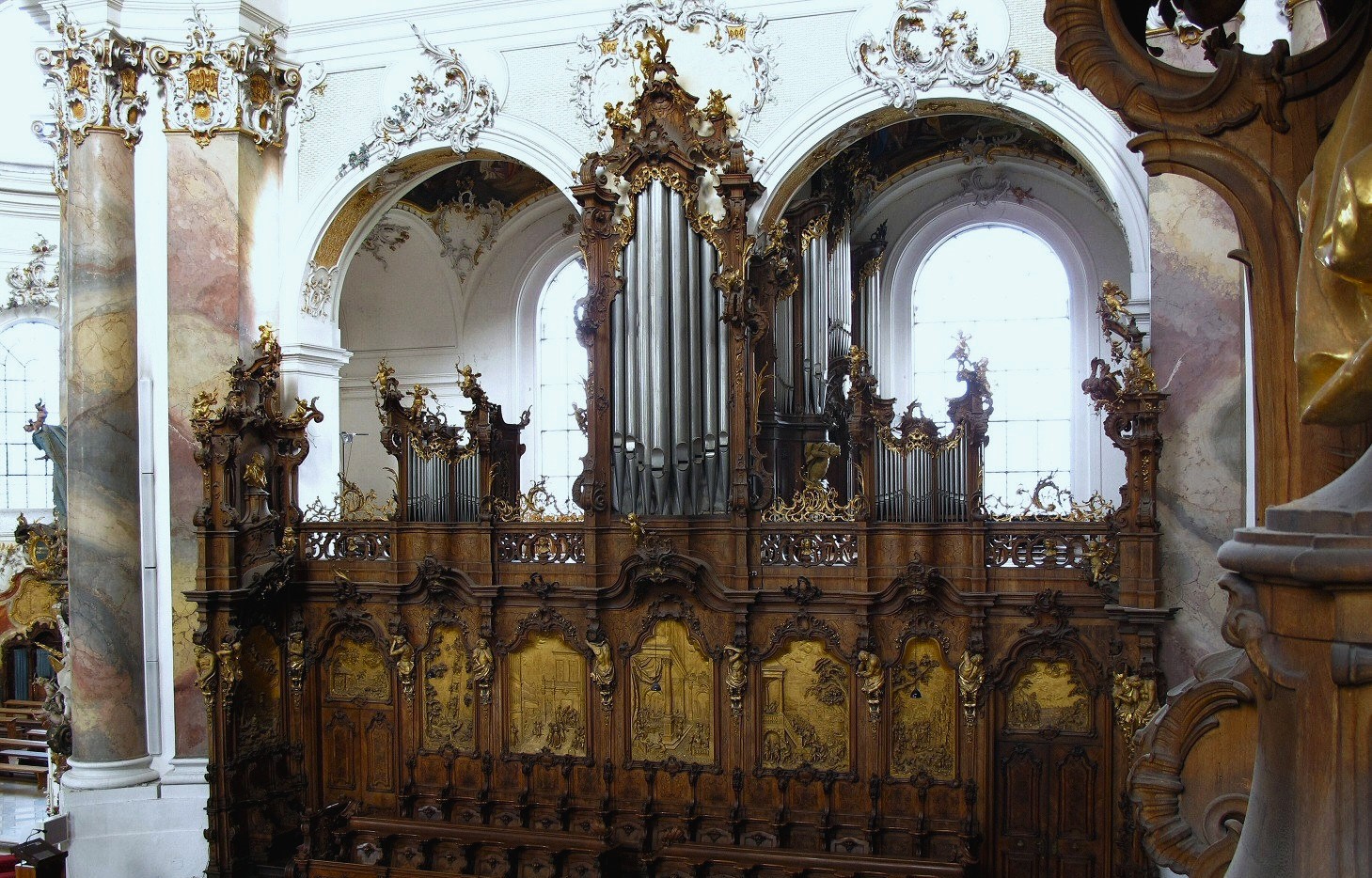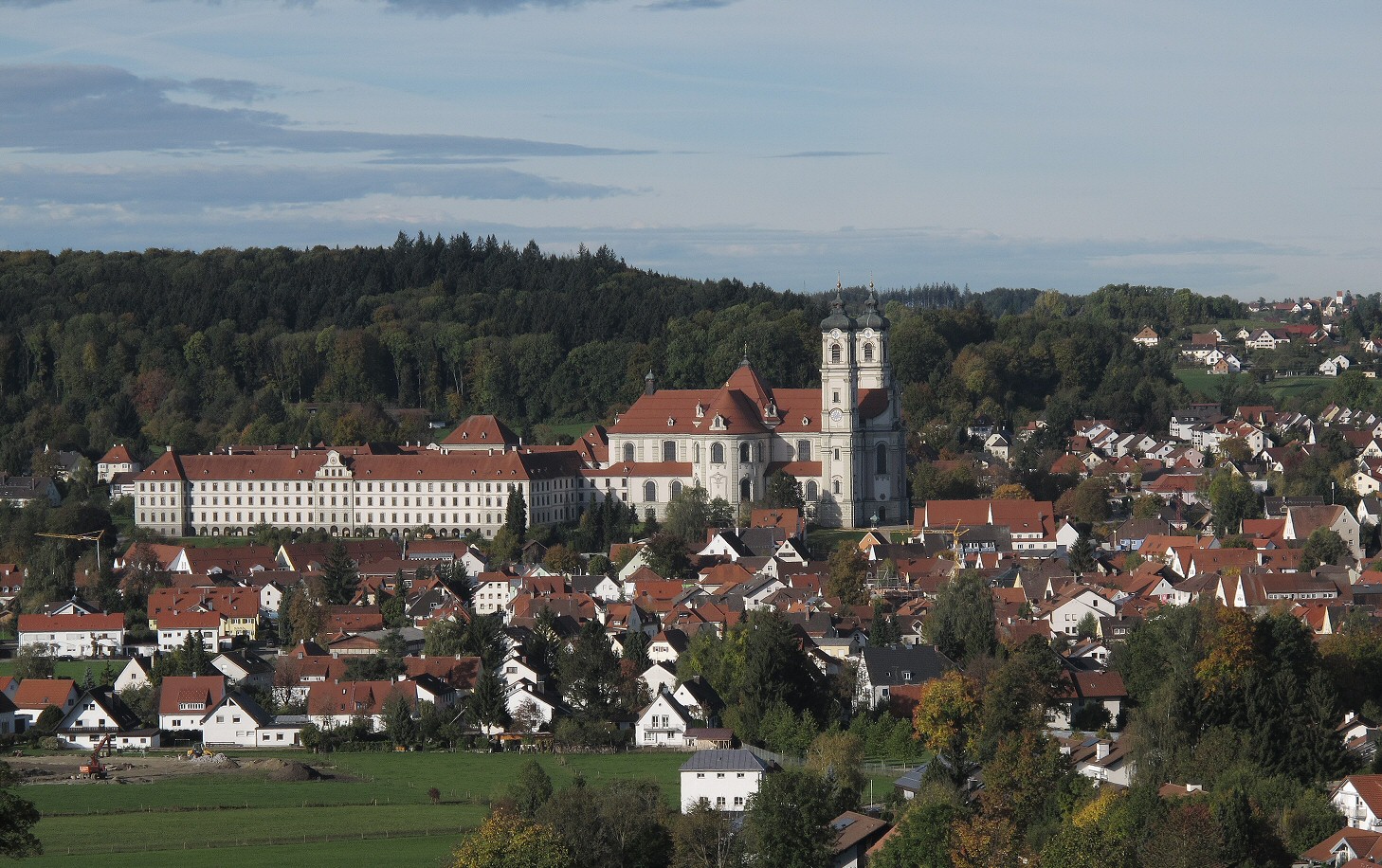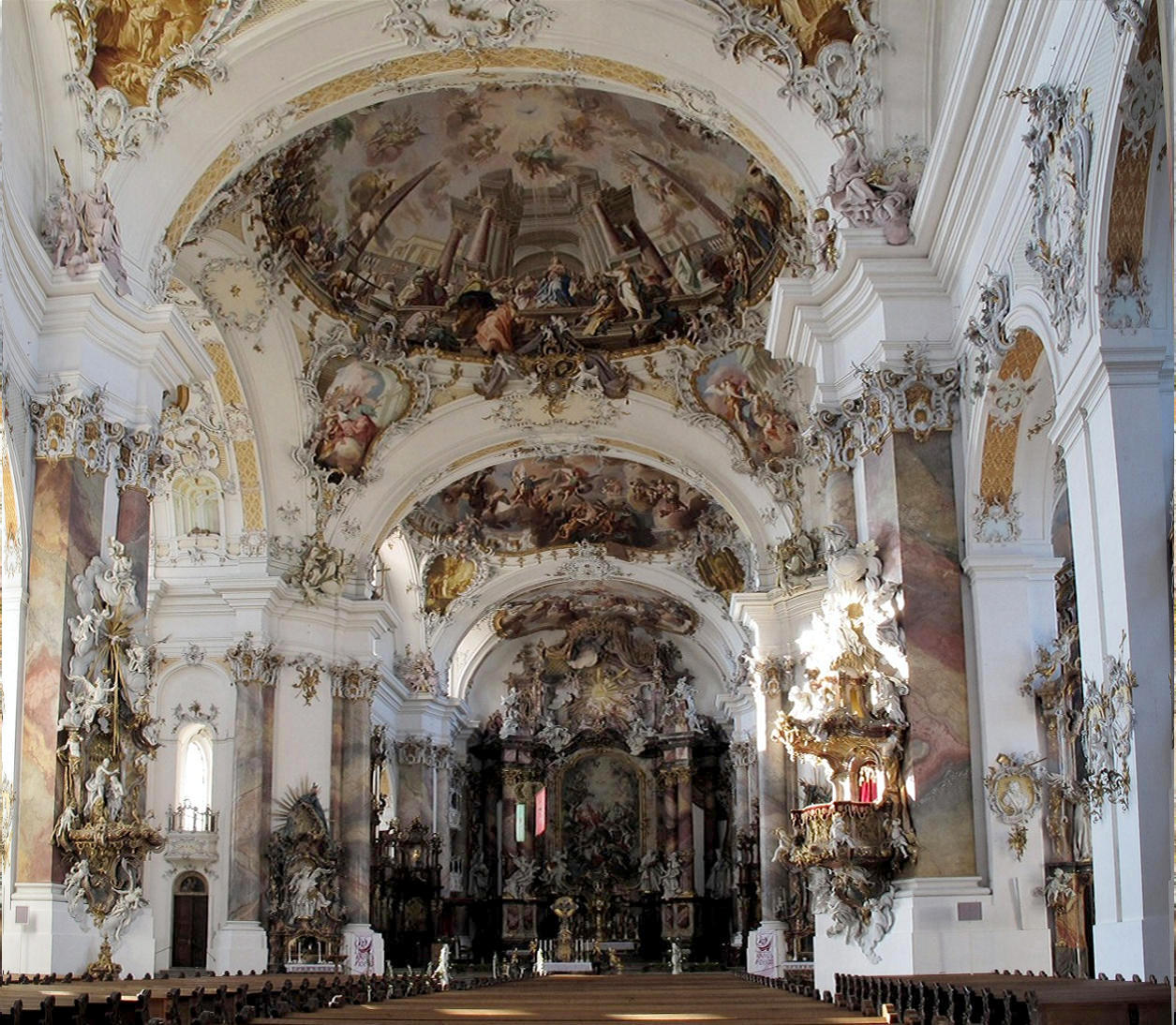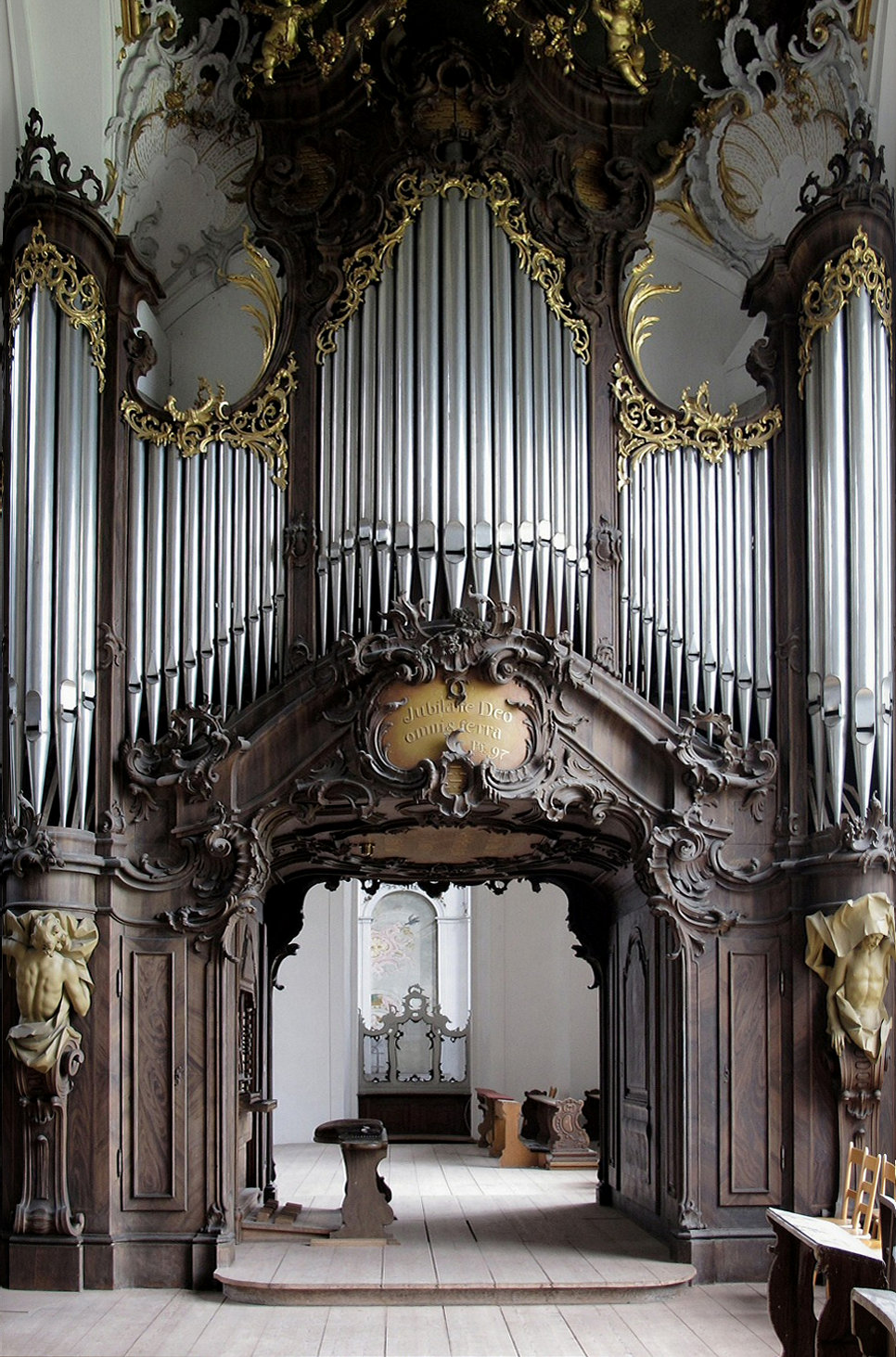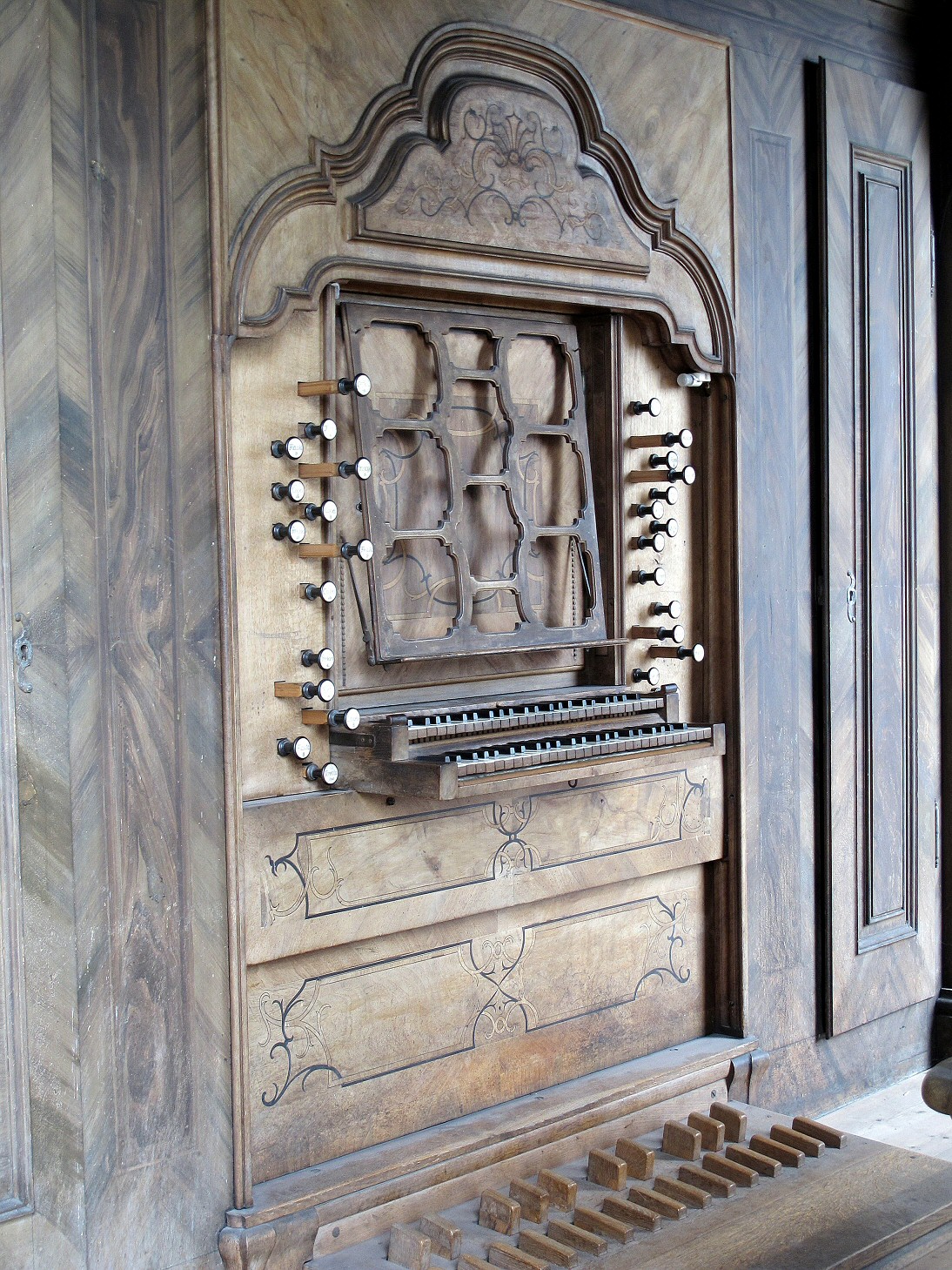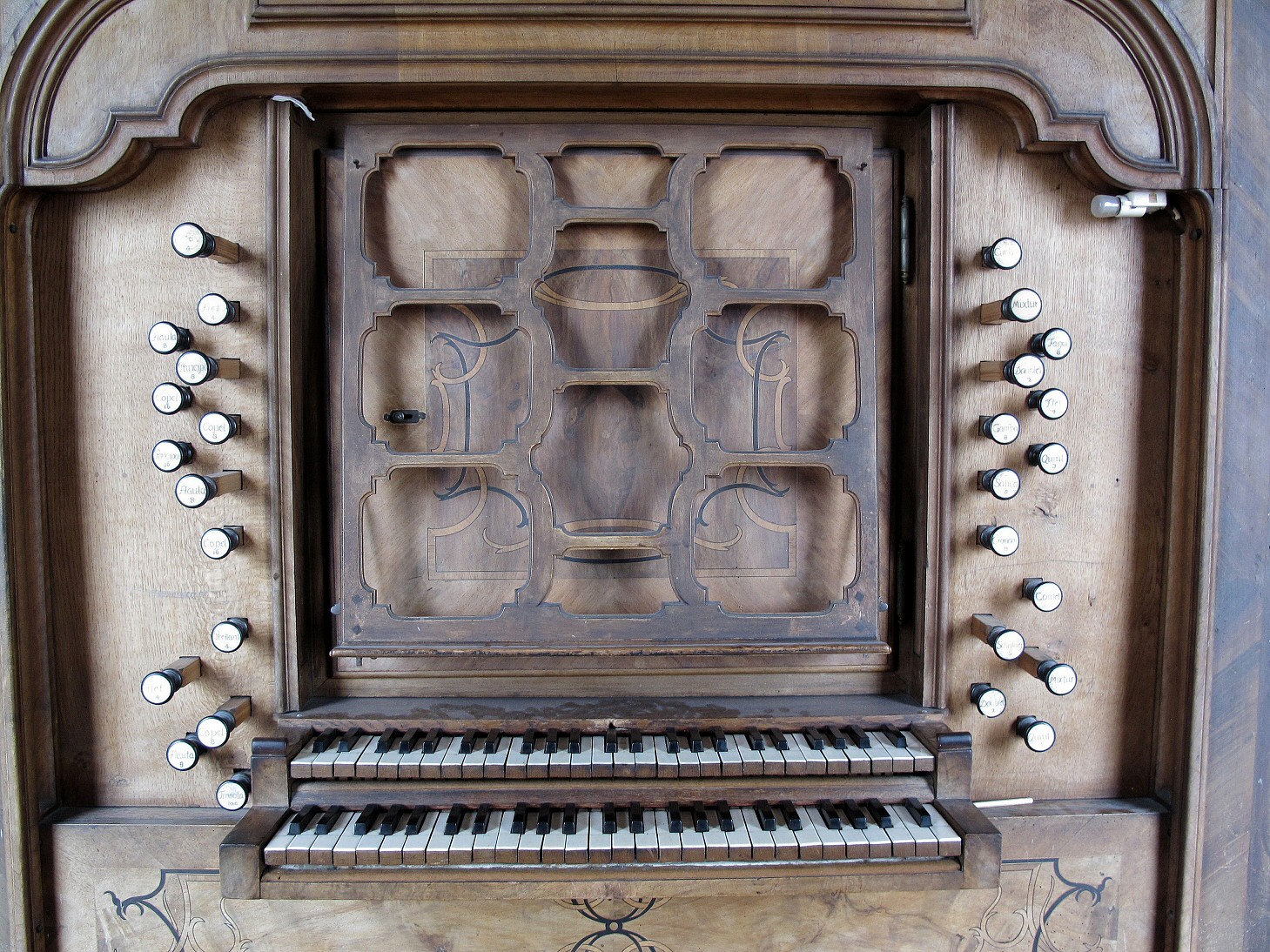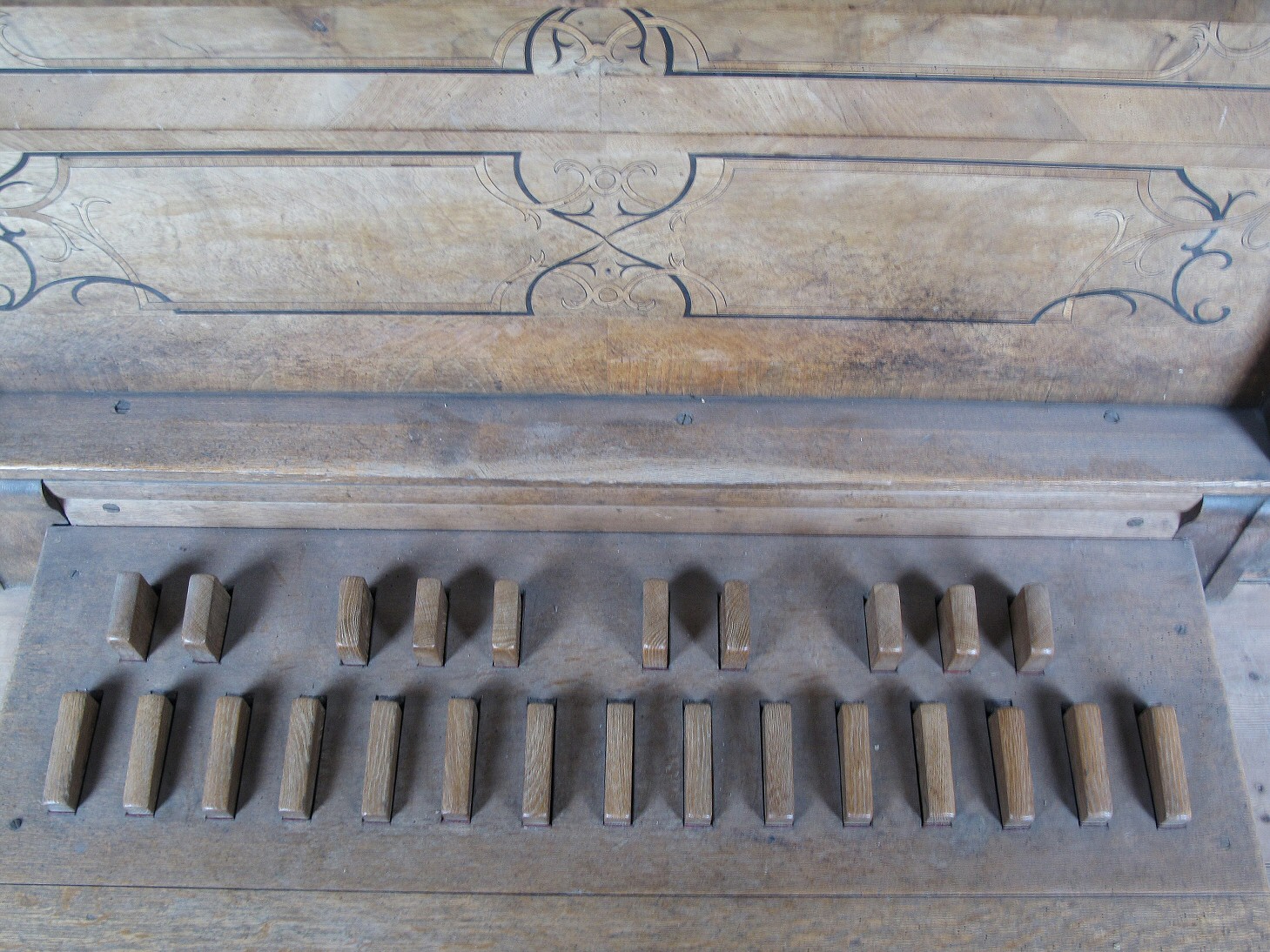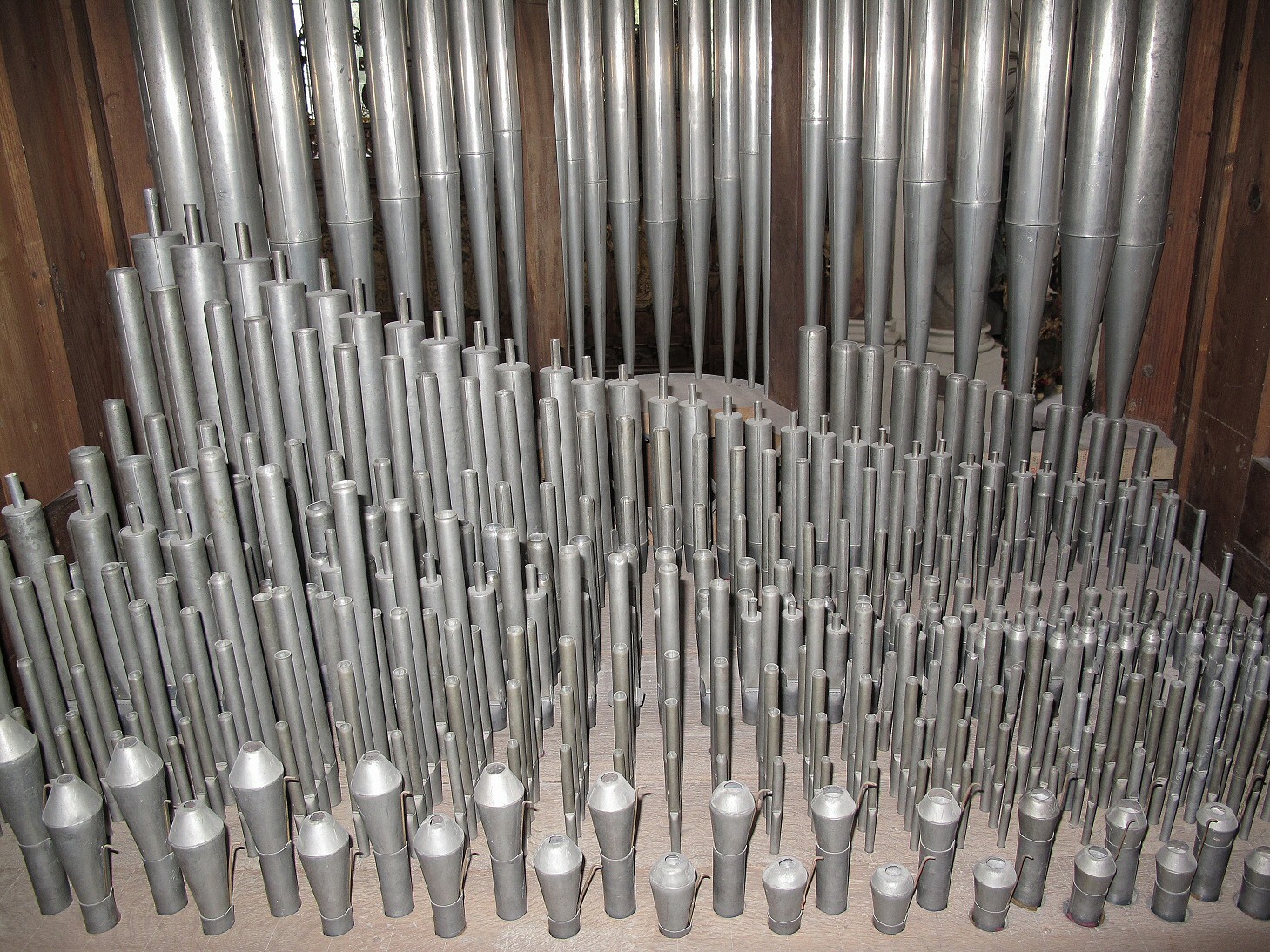Ottobeuren, Basilika St. Alexander und Theodor (Holy Spirit Organ)
| Builder | K. J. Riepp |
|---|---|
| Year | ca. 1766 |
| Period/Style | Baroque |
| Stops | 27 |
| Keyboards | 2+P |
| Keyaction | tracker/mechanical |
| Sampleset |
Available
 , sampled by
OrganArt Media
, sampled by
OrganArt Media
|
The smaller Holy Spirit Organ and the larger Trinity Organ at the Benedictine Abbey of Ottobeuren in Unterallgäu, founded in 764, are the only two almost completely original instruments remaining from Karl Joseph Riepp. Celebrated for their craftsmanship, distinctive architecture, and exceptional sound, these organs are a significant part of the international organ heritage. They skillfully blend French and South German sound ideals, regarded as timeless treasures of organ music. The smaller Rococo Holy Spirit Organ leans more towards South German stylistic elements, whereas the larger Trinity Organ exhibits characteristics typical of French organs.
Riepp’s approach to organ building is noted for its rich and full principal tones, deep mixtures, strong reed pipes with full-length resonators, wide-scale aliquots, and melodious flutes. The registers of these organs are particularly renowned for their excellent blending properties. The Rococo basilica in which these organs are housed boasts a reverberation time of up to seven seconds, enhancing their majestic sound. This architectural and acoustic environment allows Riepp's craftsmanship to resonate beautifully, preserving a critical piece of musical artistry for both historical appreciation and contemporary enjoyment.
Riepp’s approach to organ building is noted for its rich and full principal tones, deep mixtures, strong reed pipes with full-length resonators, wide-scale aliquots, and melodious flutes. The registers of these organs are particularly renowned for their excellent blending properties. The Rococo basilica in which these organs are housed boasts a reverberation time of up to seven seconds, enhancing their majestic sound. This architectural and acoustic environment allows Riepp's craftsmanship to resonate beautifully, preserving a critical piece of musical artistry for both historical appreciation and contemporary enjoyment.
| Hauptwerk | Brüstungs-Positiv | Pedal |
|---|---|---|
| Copel 16 | Copel 8 | Principal 16 |
| Principal 8 | Flauta 8 | Copel 16 |
| Copel 8 | Prestant 4 | Flauta 8 |
| Flauta 8 | Flet 4 | Flet 4 |
| Gamba 8 | Quint 3 | Quint 3 |
| Salicet 8 | Doublet 2 | Fagot 8 |
| Octav 4 | Mixtur 4f | |
| Flet 4 | Cornet 3f | |
| Doublet 2 | Schalmey 8 | |
| Mixtur 4f | ||
| Cimbal 3f | ||
| Cromorn 8 |
Knecht-Kleines Hoboeconcert
0:00
0:00
Marche D-Dur - Flotenuhr 1793 Hob. XIX
0:00
0:00
Mozart-Kirchensonate C-Dur KV 336
0:00
0:00
Krebs-Wie schon leuchtet der Morgenstern
0:00
0:00
https://www.organartmedia.com/de/karl-joseph-riepp
 Pipe Organ Map
Pipe Organ Map